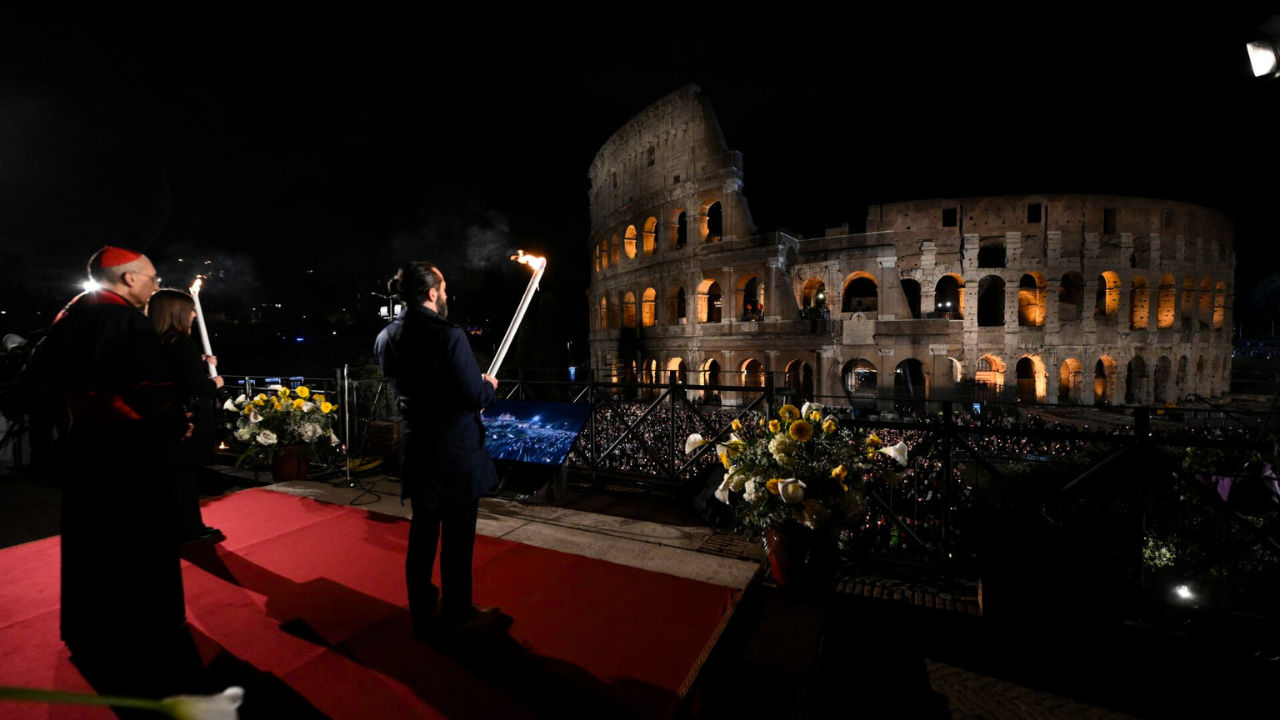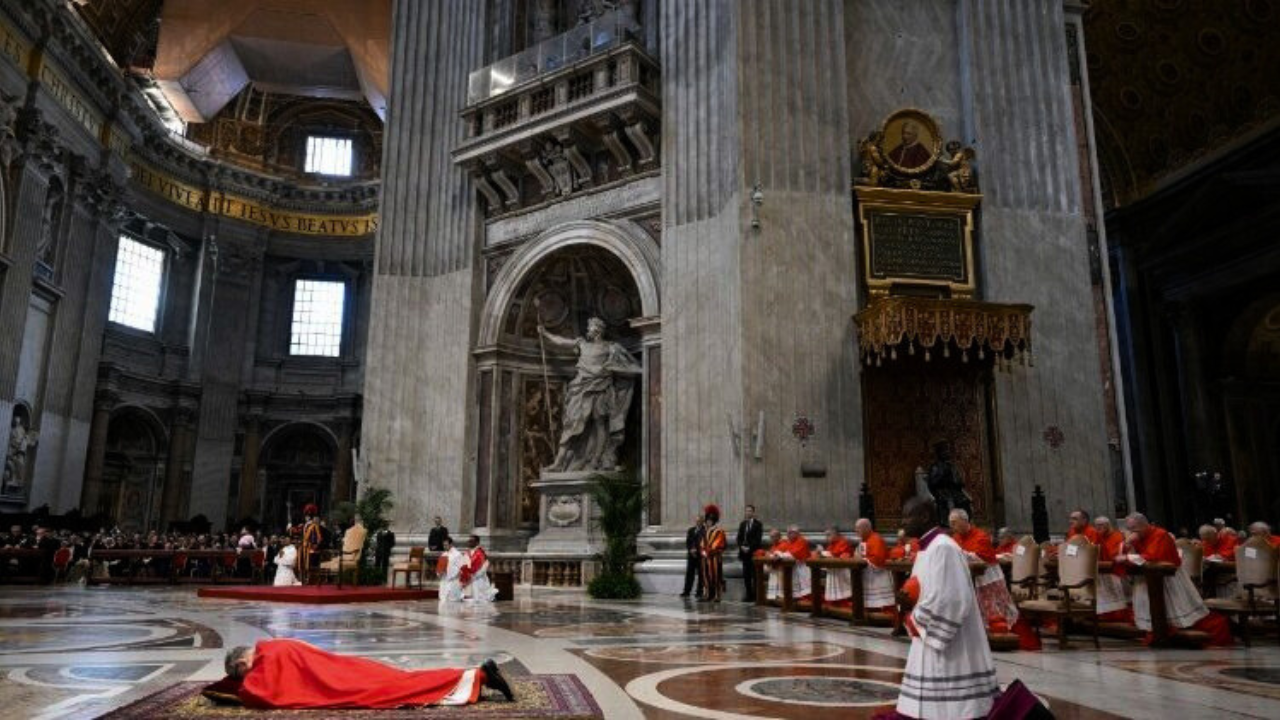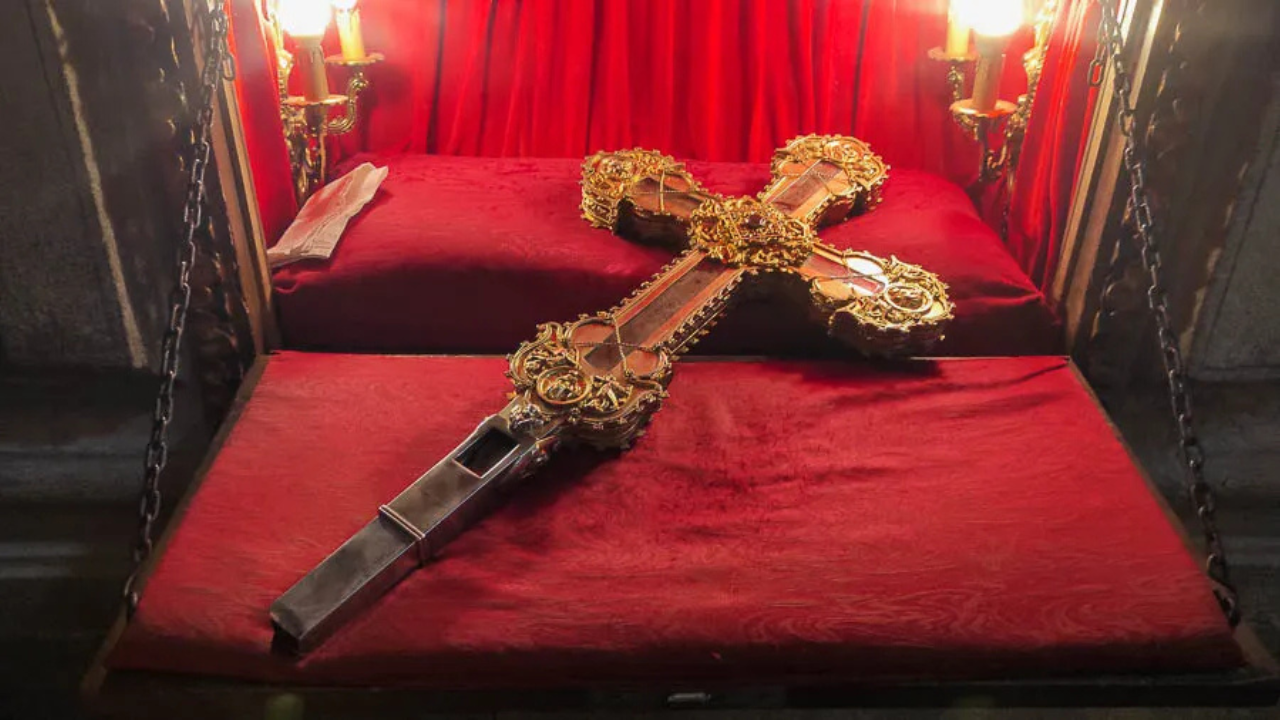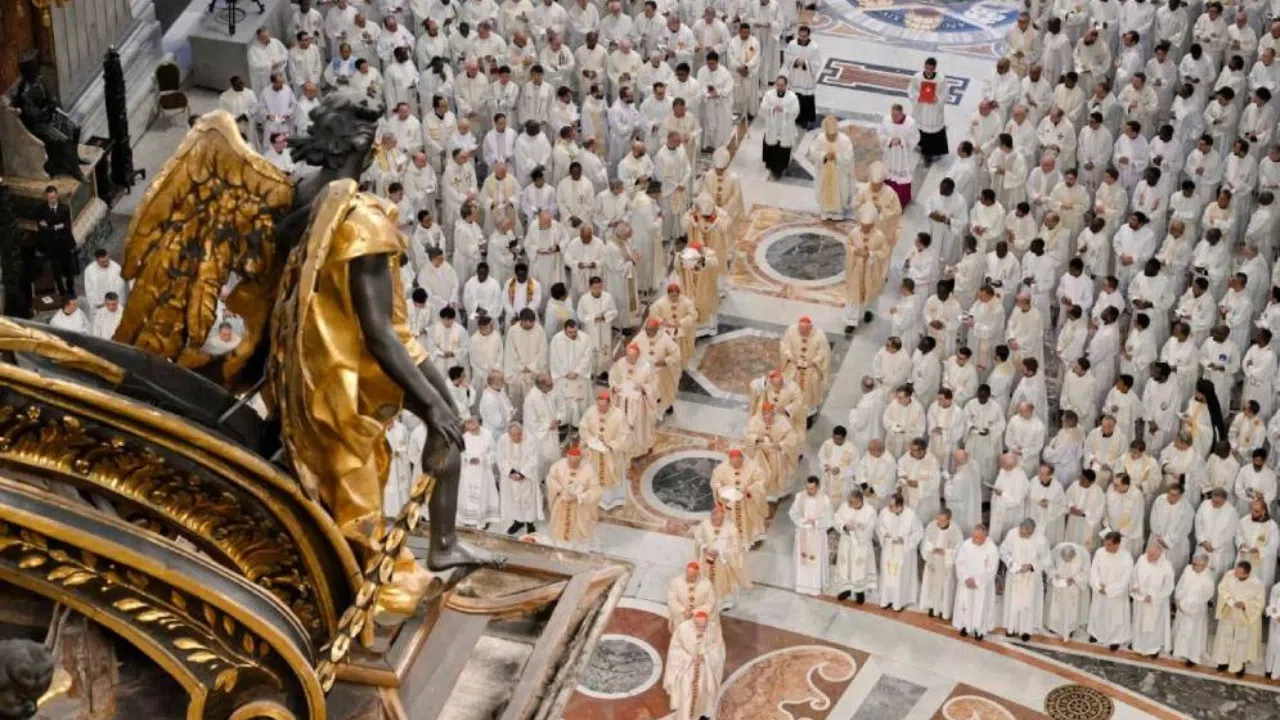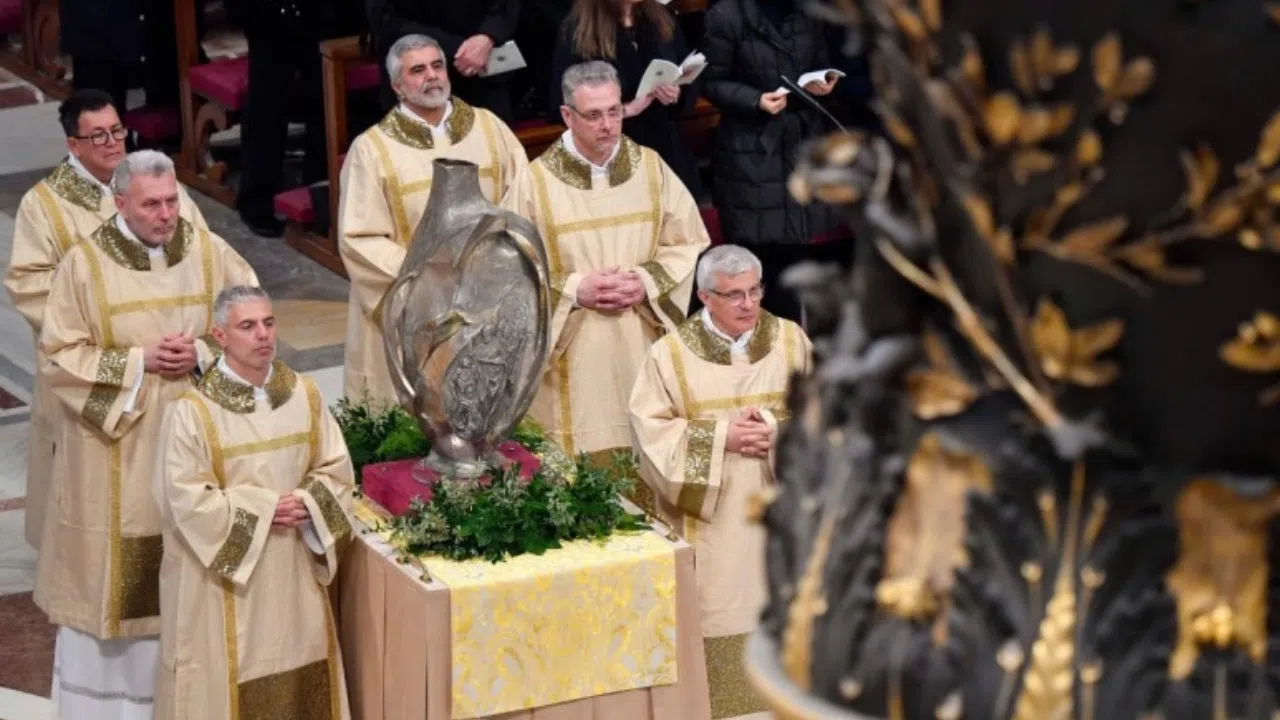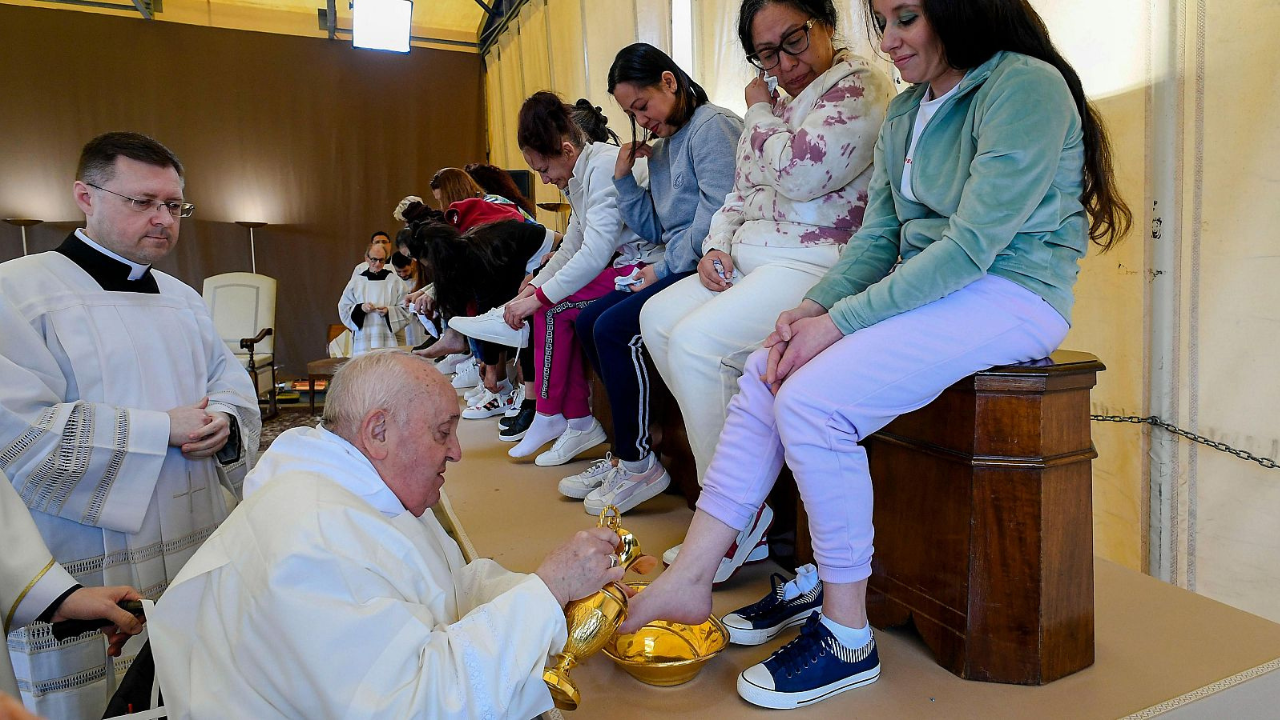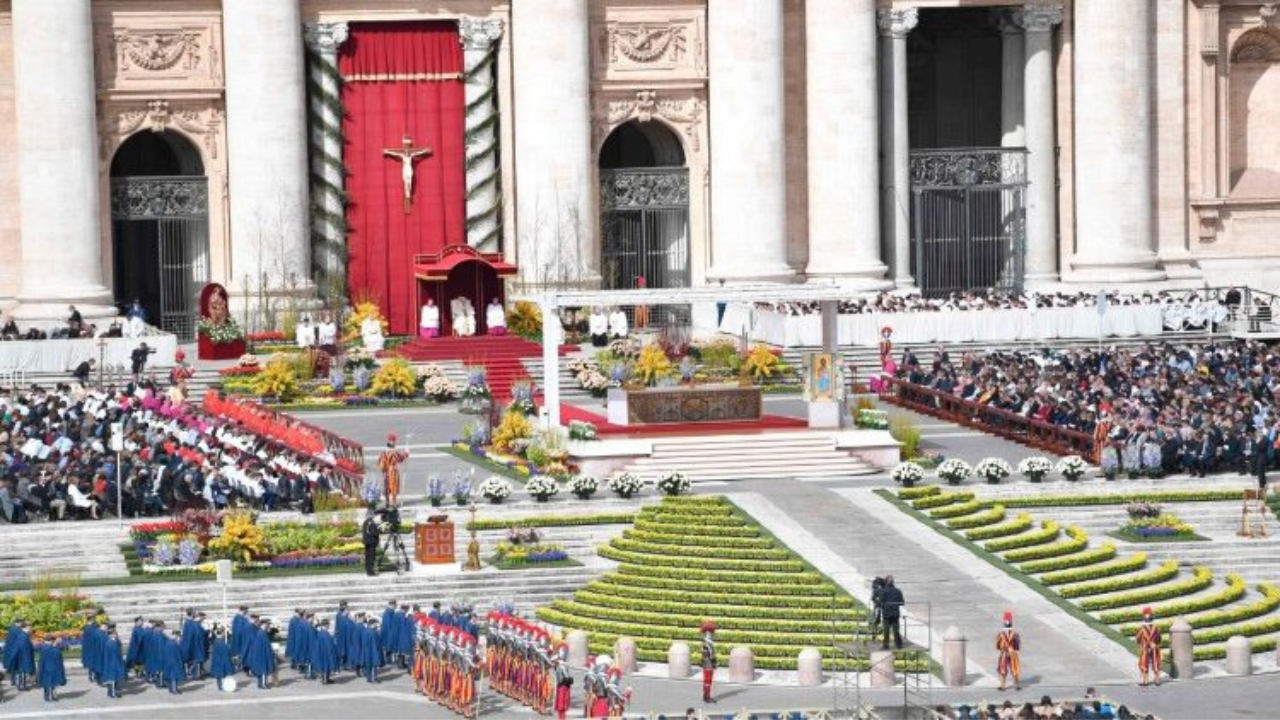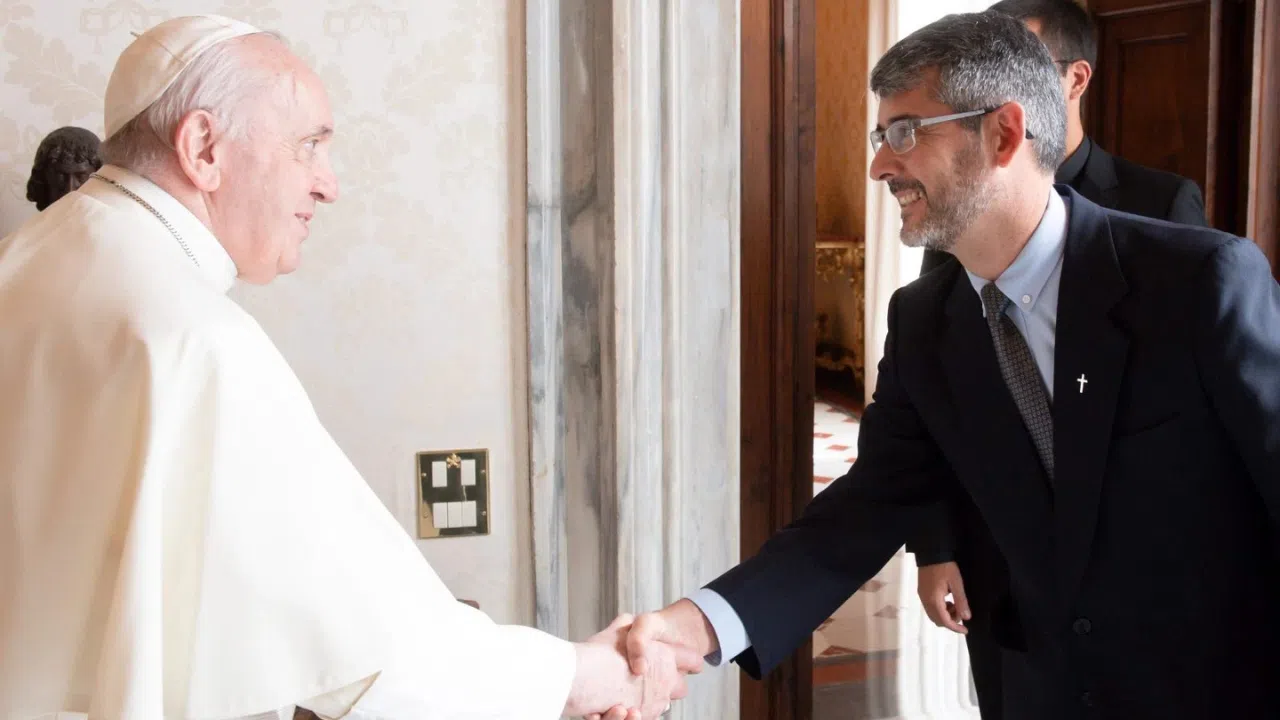Tradition holds that these pieces of wood are part of the cross that Jesus hung on around 30 or 33 AD. St. Helena, the mother of Roman Emperor Constantine, discovered them during her pilgrimage to the Holy Land.
FR. SERGIO TAPIA
Pontifical University of the Holy Cross
She got down on her knees and began to ask the Lord to show her where she had to dig. And tradition tells us that after several days of asking, she saw a light and she started digging. And she found a place where three crosses were buried: not only the cross of Christ but also of the two thieves along with a series of instruments used for the Passion.
Today, these wooden relics are kept in the Basilica of the Holy Cross in Jerusalem. Despite the name, the church is in Rome. And one story dating back to St. Helena's time reveals why Christians believe the pieces to be Christ's cross.
FR. SERGIO TAPIA
Pontifical University of the Holy Cross
The bishop of Jerusalem, not knowing what to do and which was the true cross, did a test that now could seem a little funny. They looked for someone who was deathly sick, and they touched the person to each cross. And with the third one, the person was healed and that's how they knew which was the true cross.
Many tests, like carbon dating, have been performed on the relics throughout the centuries. But the Catholic Church has emphasized that people are not required to believe in these relics.
FR. SERGIO TAPIA
Pontifical University of the Holy Cross
Our faith is not necessarily linked to these instruments. At the same time, the relics are credible. The thorns are from thistle plants from that region of the Middle East. The type of wood that forms the cross, especially the largest piece that's preserved—that is the cross of the good thief—is also known to be from trees from that region and to be about the right age.
Each year, hundreds of pilgrims visit the Basilica of the Holy Cross in Jerusalem to see the relics and instruments used in perhaps the most famous crucifixion in history.
KG

